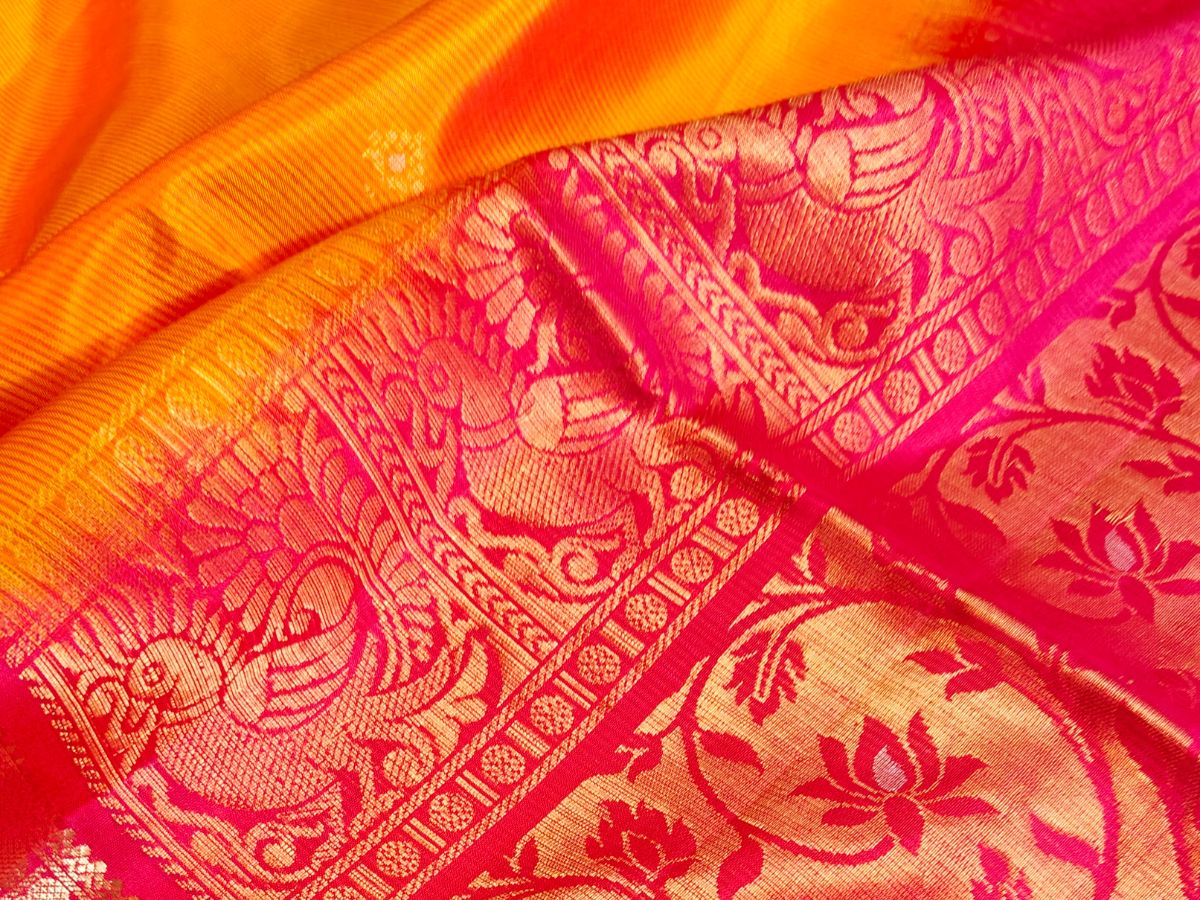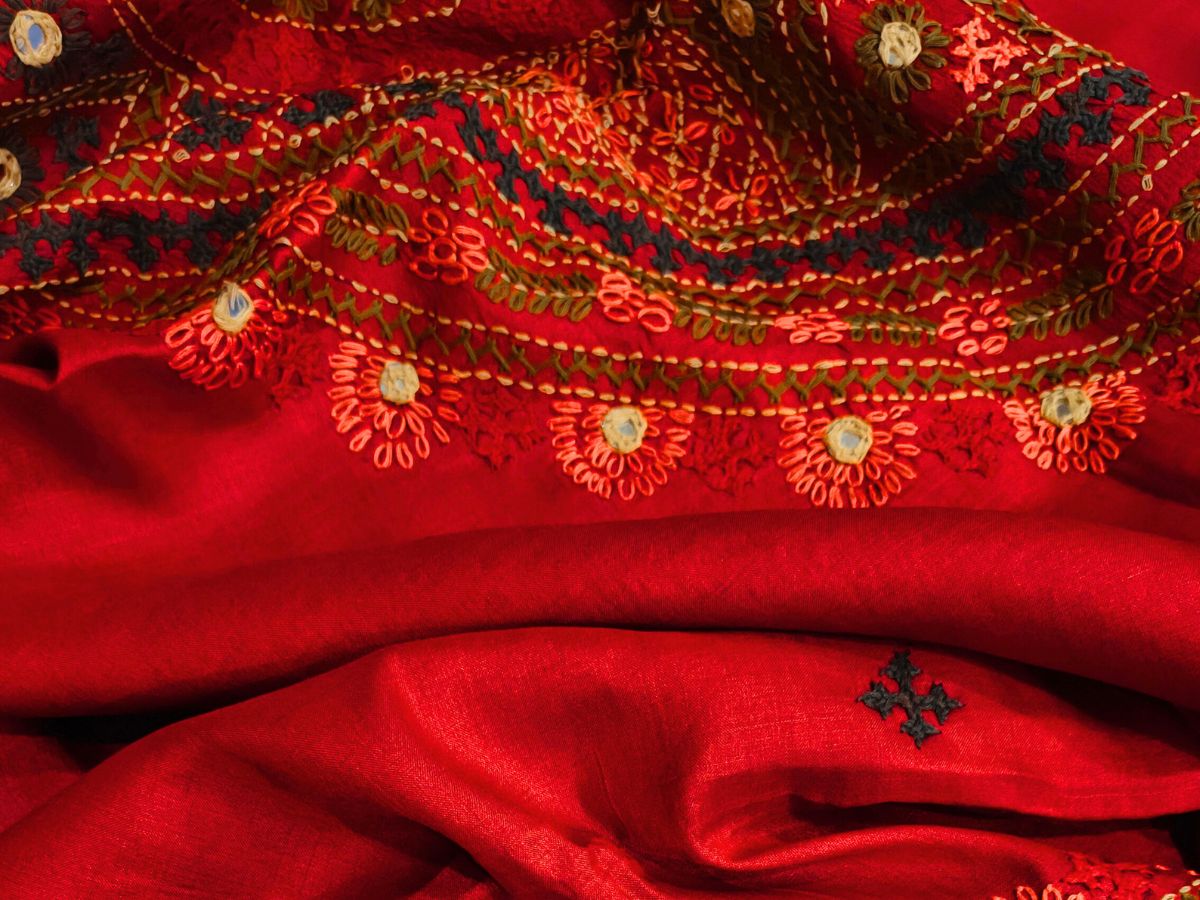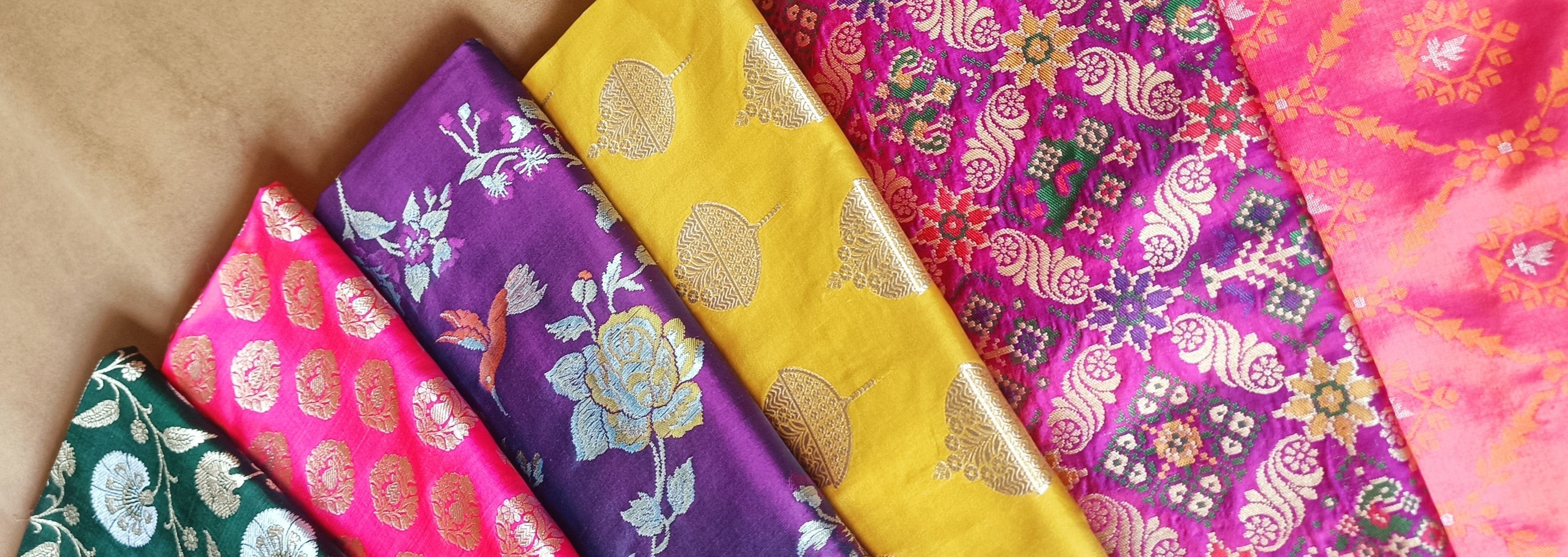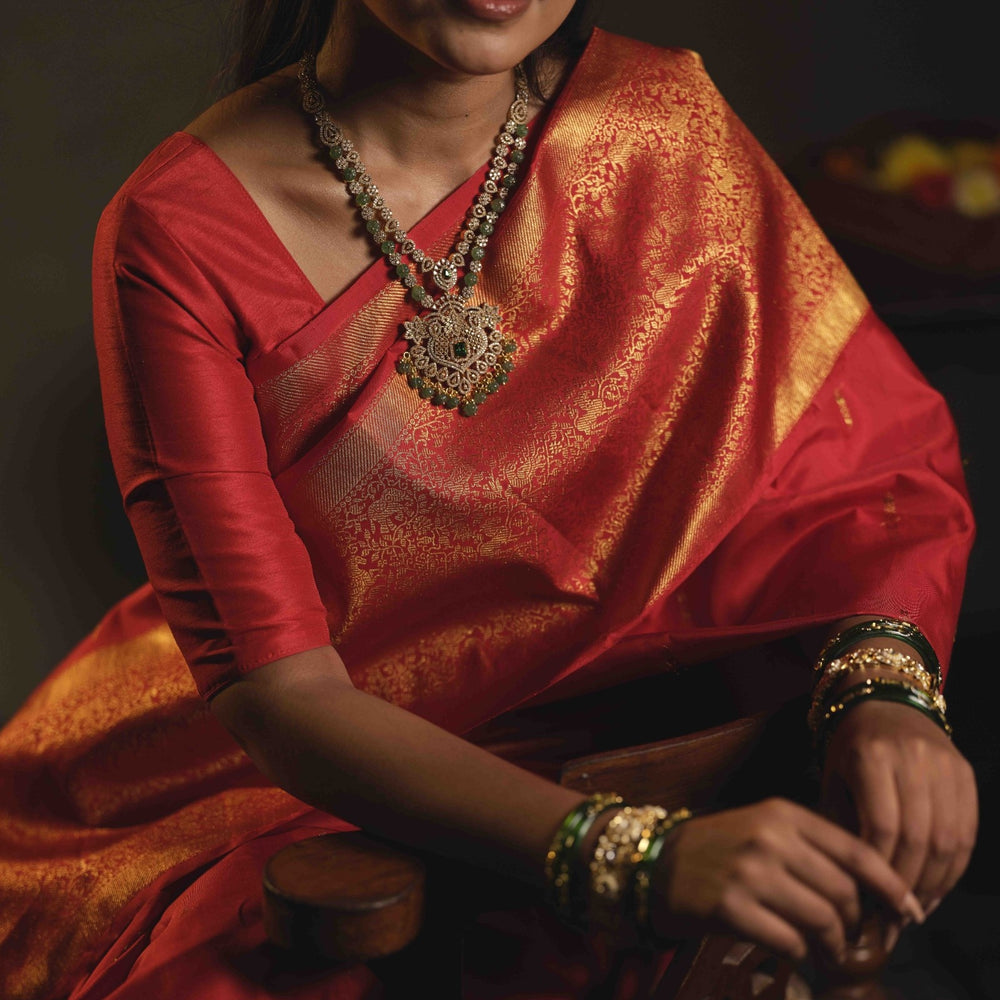Crack the Code to Authentic Pure Silk Sarees with Dakshinam!
Thinking of getting yourself a gorgeous pure silk saree with Silk Mark? Hold on, queen! Before you hit that “Buy Now” button or fall for a flashy “limited-time-only” deal, let’s talk real quick. Because when it comes to pure silk saree fabrics, not everything shiny is actually silk.
At Dakshinam sarees, we totally get the feeling—there’s nothing like draping an authentic Kanjeevaram saree or a stunning pure silk pure zari saree that makes you feel like royalty. But with lookalikes flooding the market, spotting the real ones can feel like solving a mystery.



So, how do you know if it's the real deal? How do you verify if a silk saree is original before buying online? Don't worry—we’ve got your back!
Whether you're shopping on your couch or bargaining like a boss at a store, this little guide is here to help you crack the code. From recognizing pure mulberry silk fabric to spotting fake zari, we’ll make sure you’re silk-savvy before you spend a rupee.
Let’s get into it, shall we?
Pure Silk is Special!
First, let’s talk about what makes a pure mulberry silk fabric the queen of textiles. Pure silk is a natural protein fiber spun from the cocoons of Bombyx mori silkworms. Known for its lustrous sheen, smooth texture, and strength, this fabric is the foundation of exquisite sarees like the classic Kanjeevarams and Banarasis.



When you drape an authentic silk saree, you’re not just wearing fabric—you’re wearing centuries of craftsmanship and tradition.



-
Silk Mark Certification — Your Trusty Gold Standard
Nothing beats official verification. The Silk Mark Organisation of India issues this certificate, guaranteeing that your saree is indeed made of pure silk. Always ask for this before you buy! -
Texture & Feel — The Touch Test
Run your fingers gently over the fabric. Pure silk is soft but not slippery like synthetic blends. It feels warm, and when you rub it between your fingers, it generates a subtle heat — a simple and surprisingly effective authenticity test. -
Weaving Inconsistencies — The Art of Handloom
Unlike factory-made synthetic sarees, an authentic Kanjeevaram saree will have minor irregularities in its motifs or borders. These small imperfections are actually proof of handwoven craftsmanship and add character to your saree. -
The Zari Test — Shiny but Real?
Gently scratch the zari threads. Real zari is crafted from silver threads coated with gold and has a soft sheen. Fake zari usually uses plastic or synthetic threads, which shine unnaturally bright and lack that subtle metallic finish.
How Traditional Weaving Techniques Ensure Pure Silk Quality
The magic of a pure silk pure zari saree lies in the hands of skilled artisans. At Dakshinam sarees, we collaborate with expert weavers in Kanchipuram — the silk capital of India — who follow age-old techniques, passed down through generations:
- Using pure mulberry silk threads hand-spun for softness and durability.
- Incorporating real silver zari, handcrafted into intricate patterns.
- Operating traditional wooden looms, which give the saree its unique texture and strength.
- Employing high-quality and natural dyes for vibrant, long-lasting colours that are safe for the environment.
This blend of tradition and skill ensures that every saree is not just beautiful but heirloom-worthy.
Tips to Avoid Buying Fake Silk Sarees Online
Online shopping is convenient, but it’s also a hotspot for fake sarees. How do you stay safe and get a true pure silk saree with Silk Mark?
 Shop from Verified Brands: Always purchase from trusted sellers like Dakshinam sarees that proudly display Silk Mark certification.
Shop from Verified Brands: Always purchase from trusted sellers like Dakshinam sarees that proudly display Silk Mark certification. Ask for Certification Details: Don’t hesitate to request proof of authenticity before you pay.
Ask for Certification Details: Don’t hesitate to request proof of authenticity before you pay. Check Customer Reviews & Ratings: Real buyer feedback often reveals red flags.
Check Customer Reviews & Ratings: Real buyer feedback often reveals red flags. Compare Prices: If the price is way below market rate, it’s likely a fake.
Compare Prices: If the price is way below market rate, it’s likely a fake.-
 Know Your Fabric: Refer back to the texture and zari tests discussed above.
Know Your Fabric: Refer back to the texture and zari tests discussed above.
How to Perform Burn Test for Real Silk Sarees Safely
Here’s a fun fact — you can perform a burn test for real silk sarees safely at home! This test is a quick way to check fabric authenticity if you have a small, hidden thread or extra fabric sample.
- Take a tiny snippet of the saree fabric.
- Using tweezers, hold it over a non-flammable surface.
- Light the fabric carefully with a matchstick or lighter.
- Pure silk burns slowly, smells like burnt hair, and leaves behind a black, brittle ash.
- Synthetic fabrics melt quickly, smell like burnt plastic, and form hard beads.
Important: Do this only if you’re confident and take precautions to avoid damage. Never burn the precious pallu or visible parts of your saree!
Your Guide to Buying Authentic Pure Silk Sarees
Buying a pure silk saree fabric should be an exciting, joyous experience — not a gamble. By following this Dakshinam expert guide, you’ll have the tools to confidently identify genuine silk and avoid fakes.
Remember:
- Look for the Silk Mark certification.
- Trust your sense of touch and the warmth of the fabric.
- Celebrate the little weaving inconsistencies — they tell a story.
- Test the zari carefully.
- Choose verified sellers.
- And if you dare, try the burn test safely.
With these tips, you’re ready to own a piece of tradition that shines in elegance and quality.
Explore Dakshinam’s curated collection of authentic Kanjeevaram sarees and pure silk pure zari sarees, and join thousands of happy customers who have experienced true silk luxury.








